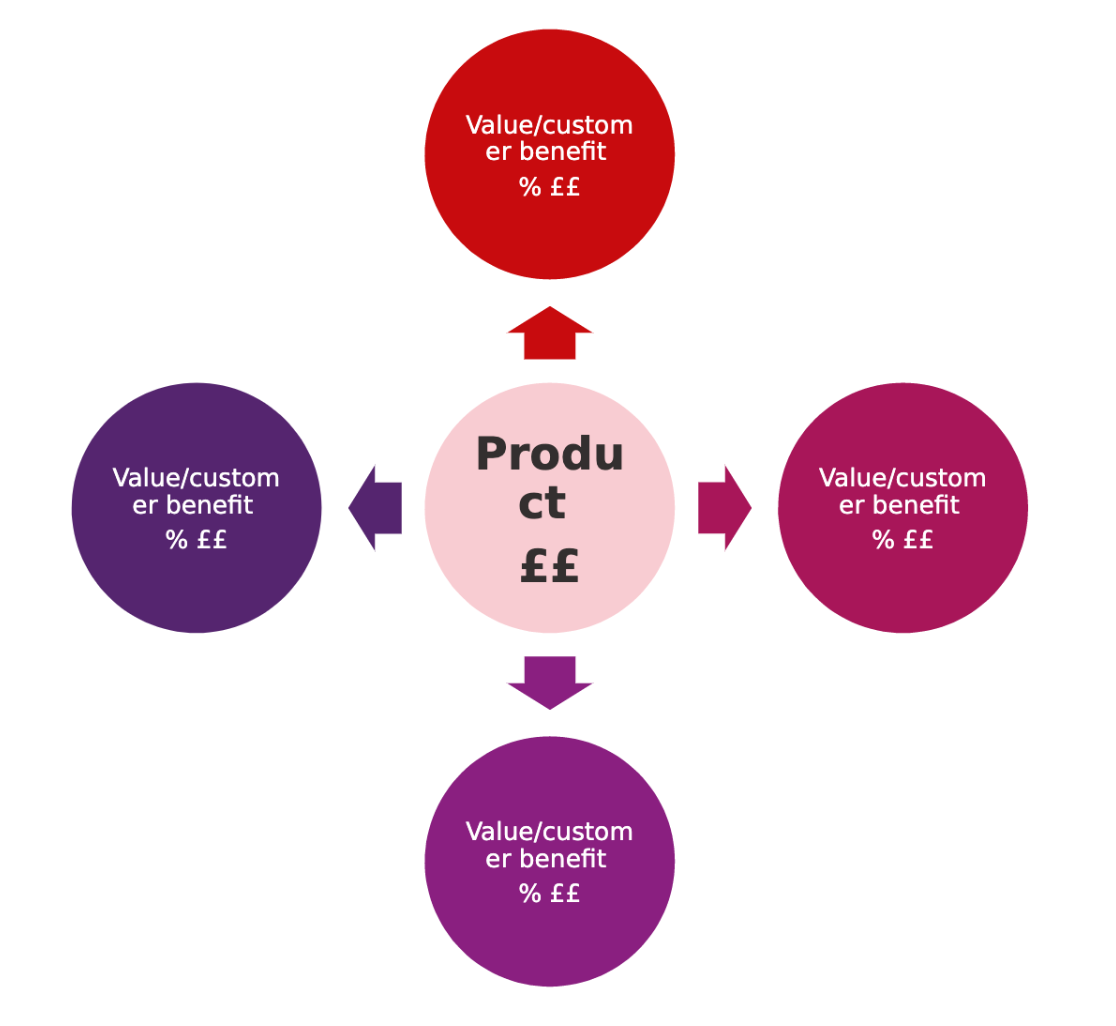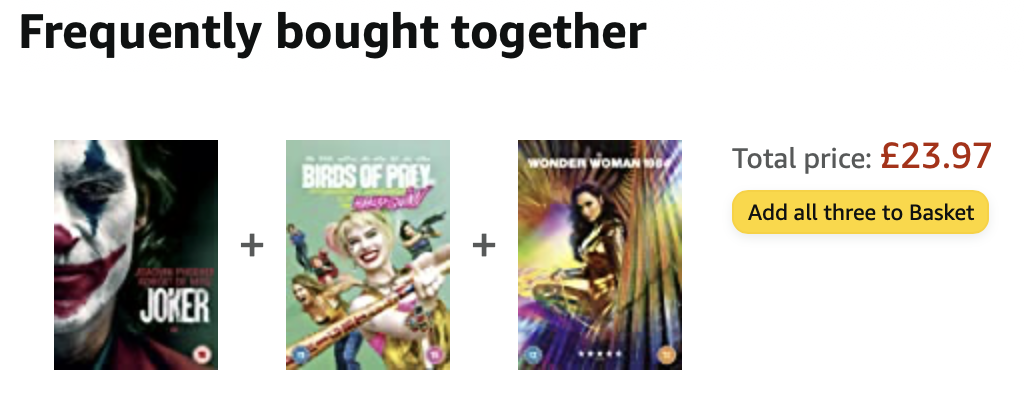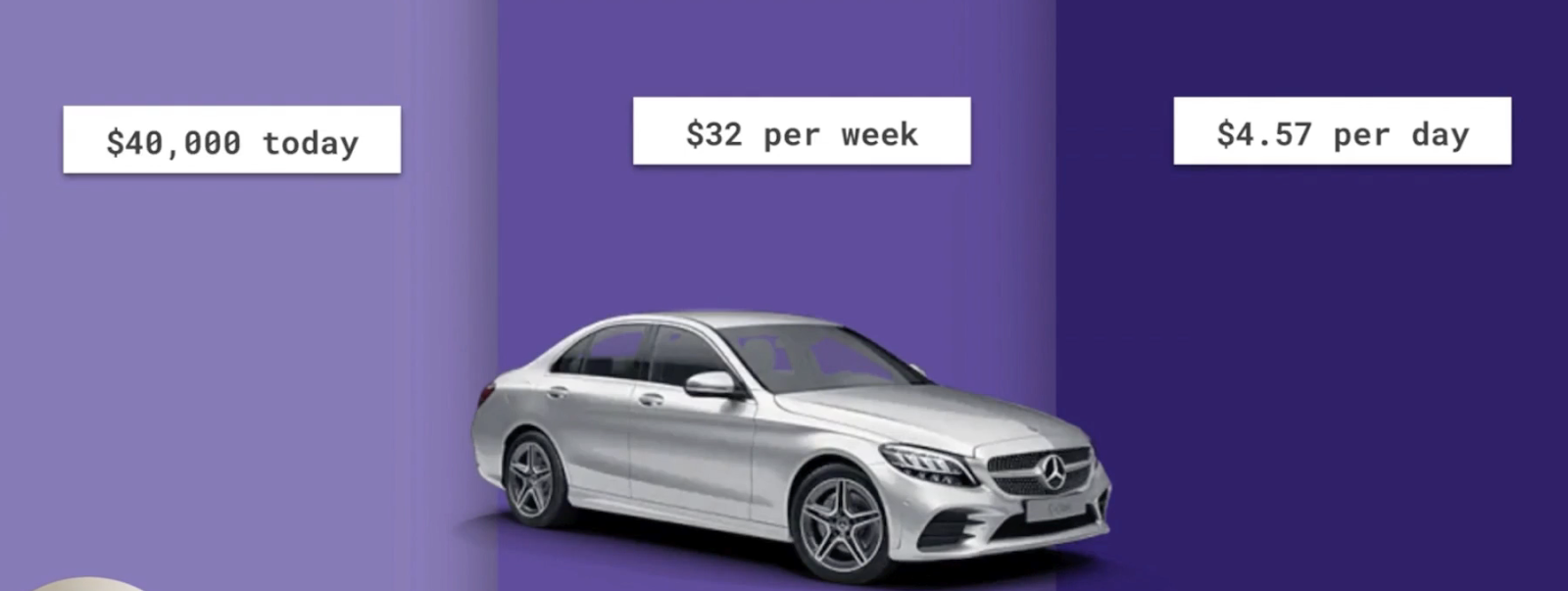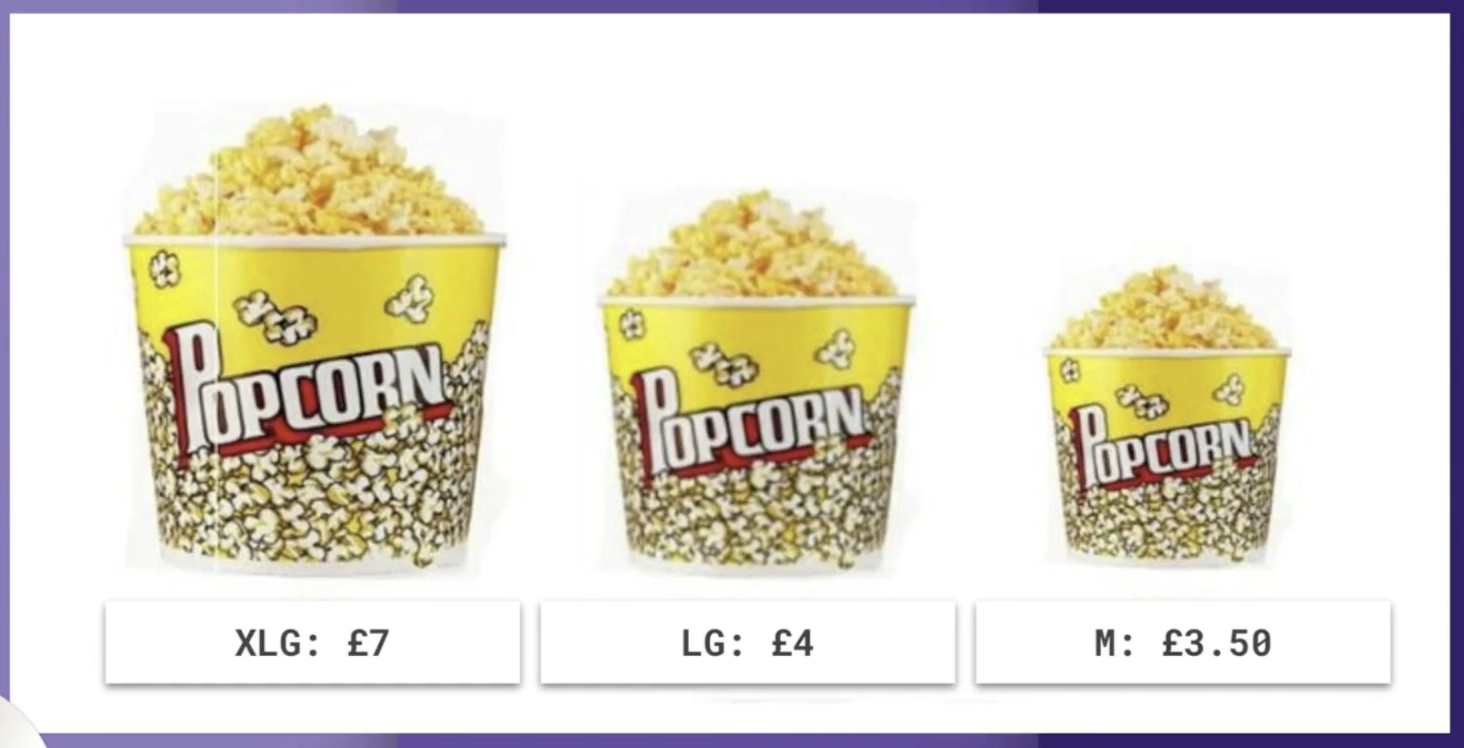Having conducted competitor intel, and successfully building a business case, you’ve likely got the thumbs up from stakeholders.
Next on the agenda is your pricing strategy.
Now, there’s no escaping the fact pricing your product or service is tough. Real tough. After all, your target audience may share the same pain points, but their budgets will inevitably vary.
If you set your price point too low, your blood, sweat, and tears will amount to next to nothing. On the flip side, if your product price is way out of sync with your buyer personas and target customer budget, you could drive ‘em straight into the arms of your competitors.
In this article, we’ll address:
- What a pricing strategy is
- Types of pricing strategies
- How to calculate a product selling price
- What to consider when pricing a product
- What to consider when discounting a product
- How to increase your prices (without P-ing off your customer)
What is a pricing strategy?
A pricing strategy is the model and/or method a company uses to price their product or service suitably.
The process helps companies generate maximum profits, whilst simultaneously taking into account the buyer, as well as trends within the market.
Pricing strategies differ depending on the nature of the company and circumstances, which makes teaching it somewhat tricky because there really is no such thing as a one-size-fits-all solution.
Different types of pricing strategies
Product marketers have several pricing strategies to consider, including:
- Competitor-based pricing
- Cost-plus pricing
- Value-based pricing
- Dynamic pricing
- Penetration pricing
- Price skimming
- Target costing
Cost-plus pricing is often considered one of the most simple methods on offer, but target costing is another method used by PMMs when mapping out their pricing strategy.
Target costing
Target costing is defined by the Chartered Institute of Management Accountants as: “A product cost estimate derived from a competitive market price”.
Target costing is categorized as a management technique, as well as a pricing method, in which price points are influenced by the condition of the market, and other key factors, such as:
- Homogeneous products
- Volume of competition
- No/low switching costs for the end customer
Example: How to price your product using target costing
Imagine you have a business selling customized soccer jerseys, and the average market price is $200. Here’s how to calculate your target cost:
Average market price: $200
Target margin: 50%
Target cost: $100
Because your target margin is 50%, the maximum amount you can use to produce each product is $100. If it costs more than $100 to manufacture each customized soccer jersey, this will reduce your margin.
So, how do you determine the appropriate margin?
There's no quick-fix to determine an appropriate margin for your product but the standard margin is 40-50%.
Alternatively, you can use the price multiplier method to calculate your margin:
Simply multiply the total costs by 2 (100% markup or 50% margin) or by 3 (200% markup or 67% margin). This will help you establish a suitable mark-up to put on your product.
If your product is unique, you’ll be able to charge a higher margin.
How to calculate a product selling price
A suitable product selling price is key to your success. If you’re underpriced, not only will you lose money, but your product could also be viewed as cheap and unreliable.
On the other hand, overpricing your product means you run the risk of pricing yourself out of the market.
So, what’s the solution?
You need to introduce a price point that’ll secure your place in the market, satisfy your customer, and give your business scope to thrive and develop.
Important pricing formulas:
Product selling price
To calculate your product selling price, use the formula:
Selling price = cost price + profit margin
The cost price is the price a retailer paid for the product, while the profit margin is a percentage of the cost price.
How to calculate average selling price
Before calculating your selling price, it’s important to understand the average selling price of existing products already available in the market.
Average selling price can be calculated using the formula:
Average selling price = total revenue earned by a product ÷ number of products sold
If your company is in the process of releasing a new games console and wants to position it as a high-end product, the average selling price of $500 of existing games consoles can be used to guide your pricing strategy.
You may price yourself at $550-$600, to stand out as a luxury (albeit more expensive) alternative.
How to calculate product selling price by unit
If your business stocks up on inventory in bulk, it may be worth calculating your product selling price by unit.
To calculate your product selling price by unit, follow these three steps:
- Calculate the total cost of all units purchased.
- Divide the total cost by the total number of units purchased - this will provide you with the cost price.
- Use the selling price formula to calculate the final selling price.
What to consider when pricing a product
Silvia Kiely Frucci, Senior Product Marketing Manager at Castor, shared five lessons she’s learned when pricing products during her career:
1. Follow the process but don’t be bound to it
Pricing is a complex matter and it cannot be driven just by qualitative insights. Creating a framework around the various pricing work streams is essential to get things done.
For the past two years, I have used the model below as a guideline:

Even if it looks like a linear process, milestones and decisions are not always linked to the stage that the process suggests they should be dealt with.
For example:
- Relevant competitor information can be found after price testing with customers.
- The initial customer segmentation must be re-evaluated when new qualitative insights have emerged during a pricing workshop.
It’s important to always keep an open mind during the process to make sure your pricing output reflects the market needs.
2. Pricing is a team effort
Product marketers are often responsible for pricing but the process doesn’t have to be a single-handed decision. Pricing workshops are the perfect ground to involve all the key influencers to discuss around the table.
Product, sales, marketing, customer engagement, project management, and Business Unit Directors are all stakeholders in the success of the pricing strategy. They all hold a unique perspective on products, customers, and markets, and they all have very different KPIs around success.
Creating an open dialogue is the best way to hear everyone’s point of view and find a common strategy.
3. The perfect pricing structure is a myth
In the past I have built different pricing models: some were cost-plus only, others heavily relied on competitor pricing insights, and some were value-based.
There is no doubt to me that value-based pricing is the most successful way to price products, both in the physical and SaaS space.
Value-based pricing best practices often show a three-tier option with tick boxes for product features/benefits. Although this output is very clear and simple for customers, it cannot be applied for every product.
Some products are so complex and/or so customizable, they cannot be easily deconstructed to create different versions.
It is more the case of displaying value to the customers using a complementary pricing model, where the final price is built by attributing a monetary rate to each customer-recognized value.

This model could be used as a guideline for discounting by asking the simple question to your customers: “Which value do you want to drop for a cheaper price?”
4. Negative price testing
Negative price testing is the best ground to re-evaluate your product value proposition.
I find price testing one of the most complicated processes to plan. Is it best just to live test and look for customers’ behavior in response? How about creating customer panels before roll-out? Will you test on renewals or new business? The questions are infinite.
Whichever strategy you select for the product you are selling, make sure you create a clear way to capture customer feedback. Define 1-3 items that will help you define customer product perception in response to your pricing and align it with your product value proposition.
Great pricing means the customers have understood your product the way you and your company sees it.
5. Pricing is not just a number
Making plans to roll out the price to the rest of the company is as important as deciding the price itself.
One of the never-to-be missed actions from the pricing workshop is agreeing on a clear strategy around sales enablement. In my experience, partnering with your marketing team at this stage is paramount, they will help you shape the message internally and to the customer.
What to consider when discounting a product
Discounting is a tried and tested tactic used by companies worldwide to drive sales; research has revealed discounting is the top pricing strategy for retailers across all sectors.
While discounting your product can increase your customer base and generate additional income, it can sometimes prove counterproductive.
Although reduced pricing can attract more customers, this strategy can also reduce your profit margins or attract negative personas when it isn’t planned properly.
Before applying any discount to your pricing strategy, be sure to plan meticulously and consider the following:
Define your objectives
Never apply a discount without establishing why you’ve decided to apply a discount in the first place.
Perhaps you’re hoping the tactic will attract new customers? Maybe you want to appease your existing customers? Are you dropping prices to reactivate churned customers?
It’s critical to identify your reason for applying a discount because there are different types of discounts applicable for different objectives.

For example, if you’re trying to reach churned customers, a personal campaign is the best way to achieve your aims and win them back around.
Segment your personas and offers
When you’re discounting products, you can increase your conversion rate by introducing segmented offers based on your customers’ preferences.
Create customer profiles detailing their buying habits based on previous purchases and use this information to offer discounts that are relevant to each customer.

In theory, this may seem like a daunting task. However, a customer management system (CMS) will equip you with all the information you need to see what every single customer is buying and how much money they spent, allowing you to offer an appropriate discount.
Get your timing right
When you’re considering applying a discount, time is of the essence.
If you send out a deal at a time when your customer doesn’t need it, this will have a significant impact on your conversion rate.
Be sure to use the data at your disposal to identify when sales are at their peak.
If your sales trends indicate your customer base is converting at the start of the month, it wouldn’t make sense to introduce a discount at the end of the month when they’ve spent their monthly paycheck.
There are times when an industry itself informs when a company decides to introduce price discounts.
For example, every year, the English Premier League soccer season runs from August to May, and clubs release new soccer jerseys in the build-up to the first week of the campaign. With the latest designs being released in June/July, the soon-to-be outdated jerseys are reduced by more than 50% as fans start to switch their attention to the updated designs.

Consider your margins
You need to make sure you don’t compromise too much by applying a discount that’ll mean you lose money. It’s important to set an acceptable margin range for your products and any discounts applied.
Conditional promotions are a great way to offer discounts whilst protecting your margins. These promotions differ from blanket promotions in that they entice customers with a discount on the condition that they fulfil certain criteria. For example, spend X and get X% off.
Alternatively, a condition could be to limit an offer exclusively to VIP members, or customers who’ve signed up for a loyalty scheme.
Identify upselling and cross-selling opportunities
When you discount a product, this can increase the number of visits to your website. Take advantage of this opportunity by upselling or cross-selling to generate as much income as possible from each prospective customer.
eCommerce company Amazon uses these techniques all the time.
For example, let’s say you want to buy the Joker DVD - you head to Amazon, search for the product and go to add it to your basket.
Then this catches your attention:

Before you know it, a £6 bargain has turned into a £24 purchase and you’ve splurged £18 more than you’d initially anticipated, just because Amazon have told you it’s an ideal combo - impulse buying at its finest.
Prioritize your new products
It’s important for your pricing discounts not to work to the detriment of your new products.
As a preventative measure, list the items that’ve been discounted after your new products. This will ensure customers eyes remain fixed on your brand-new, full-price products, before they reach your reduced items.
How to increase your product price
There are also instances when you may need to increase your prices, and this can prove a challenge in itself.
Phill Agnew, Senior Product Marketing Manager at Hotjar outlined two tactics you can use:
The first tactic I want to focus on which will help you increase your price without losing customers is something called hyperbolic discounting.
Hyperbolic discounting
It's a fancy word for something we all know. It's the feeling that when you have a mountain of work piling up, and you know you need to get it done within the next couple of days but you just can't find the motivation to do it.
You put it off and instead watch Netflix and convince yourself that tomorrow you'll get all that work done. In that scenario, you have fallen victim to something called hyperbolic discounting.
”Hyperbolic discounting refers to the tendency for people to increasingly choose smaller, immediate rewards over larger later rewards”.
The problem here? Instant gratification.
Hyperbolic discounting is a cognitive bias where people choose smaller immediate rewards, so watching Netflix and feeling a bit of satisfaction, rather than larger rewards in the future, essentially getting all that work done and feeling real relief.
Here’s an example of hyperbolic discounting in action:

In the right scenario, if we were all smart, rational consumers, we would all take the $60 - that's worth the most and it's the best package we could get. But most of us pick the $15 now because the satisfaction of gaining something quickly and immediately beats having to wait a year.
Interestingly, when consumers were asked the same question with the same intervals, but a year later, they tended to choose the largest $60 dollar reward.

This proves that we are impatient and prefer immediate, short-term rewards.
For individuals, this creates a lot of problems I won't get into today, things like not saving for retirement but one of the ways that you can get around this is by breaking down big goals into smaller manageable chunks.
The problem with things like saving for retirement is that saving is a huge challenge; the amount an American needs to save is about $1.7 million for their retirement. Obviously saving that much takes a lot of money and almost a lifetime to achieve. With huge goals like that, it's much better to break it down into smaller tasks with a reward coming after each chunk.
That way, the reward is no longer a far off possibility, but something that is more immediate and guaranteed.
This works not just for people trying to save for retirement, but for big brands and product marketers who are trying to justify their high prices.
Let's pretend you're selling a high-value Mercedes Benz, you could show the full cost for $40,000 today, or you could show the cost broken down perhaps by using a bit of this hyperbolic discounting insight.

You could say it's broken down to $32 per week, or $4.75 a day over the course of two years, but which would look most attractive to the user?
One study actually analyzed this to reveal conclusively which was seen as the most attractive price. The researchers presented one of three numbers at random to over 500 participants and the results revealed the shorter the time frame, the smaller the cost, the more appealing the deal.
In fact, when the prices were shown as daily figures, they were five times more likely to be rated as a great deal than when they were shown annually.
For SaaS marketers and for product marketers, this is a really interesting insight.

Where possible in the future, we should pursue the extra bill, the cost of payment off into the future, we shouldn't encourage consumers to spend 40 grand now - instead, we should get them to make smaller commitments, like $4 a day.
Now that's one way you can reframe your products to push for a higher price. It works because you have to remove that immediate pain of payment. But it's not the only way you can reframe your price.
The decoy effect
I'll finish by highlighting one of the tactics that a lot of SaaS marketers use, but not one that the majority of us particularly understand - the decoy effect.
Example one: Popcorn
To explain the decoy effect, I'll give a bit of a story about myself and I'm weirdly habitual when I go and watch movies at the cinema.
Every time I go and watch a movie, I buy a ridiculously large amount of popcorn.
After the movie, I always regret how much I've eaten, I'm usually full after a couple of handfuls, but I always plow through to the bottom and I always eat this popcorn.
Next time I go, I'll do it again. I keep getting into a habitual loop and I feel awful every time, but I can't get out of it.
Now when looking at the price of popcorn, I start to realize why I keep falling into this trap.

This is the actual price of popcorn at my local cinema in London. There's something really interesting about these prices, right?
The extra-large is obviously too much - £7 (about $10 in America). That's almost the price of the actual cinema ticket.
I'd never spend that much but the next option down which is just 50p more than the smallest option, at £4, looks like a much better deal. With this pricing, I can't help but pick this middle option.
The reason it looks like such a good deal is due to something called the decoy effect.
Example two: The Economist
Let me explain the decoy effect by bringing in the famous study which was cited by Dan Ariely in his book, Predictably Irrational.
So Dan, being a professor at Princeton University, spotted the decoy effect, not in the cinema, but while flicking through The Economist.
He found that The Economist had these three pricing options that they were publishing. They had that online-only subscription at the top ($59), the print-only subscription ($125), and then the print and web subscription for $125.
That's quite weird, right? With this third option, you get both the print and online versions, but it's the same price as the print option by itself.
Why would anyone buy the print-only option? After all, it's the same price as the print and web option.
Basically, Dan predicted that The Economist was using this strange pricing strategy to create a decoy and encourage more consumers to spend $125, rather than the $59 for the online-only subscription.
To test this hypothesis, Dan tested it out on his students. He showed one set of his students the actual pricing with the decoy included, and the other set of students an edited version with the decoy - the print-only option - removed.
He wanted to see if removing the decoy price changed what people thought about the product and changed what people wanted to buy. Turns out removing that decoy had a huge effect.
When students were shown the decoy effect option, which was the one that The Economist had on their site, they would, on average pick the most expensive print and web subscription, it looks like such a good deal, because it was the same price as the print subscription and yet it had the web subscription included as well.
Yet, when Dan showed his students the edited version, without the print subscription included, suddenly students were far more likely to pick the online subscription only. The majority of students only spent $59.
That's really interesting. Just the way that The Economist has priced their products, the way they frame their pricing, the way they built their options, dramatically changes what consumers want.
Whether you’re putting a strategy in place, discounting a product, or increasing costs, pricing plays a prevalent role in the role of any product marketer - it’s critical to understand the ins and outs of the area.



